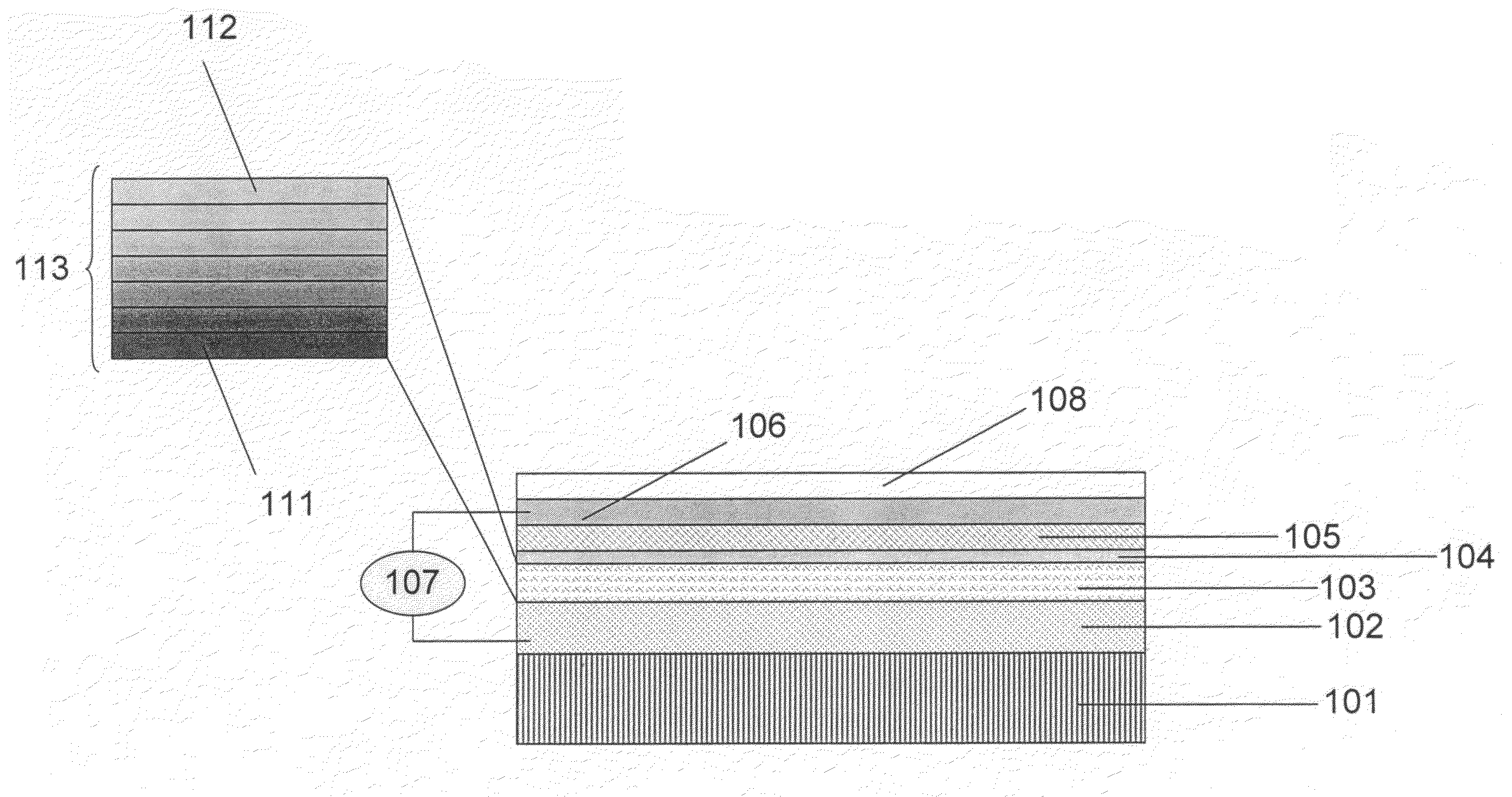Composition and method of preparing nanoscale thin film photovoltaic materials
- Summary
- Abstract
- Description
- Claims
- Application Information
AI Technical Summary
Benefits of technology
Problems solved by technology
Method used
Image
Examples
example
Preparation of CIGS
[0035]Copper (19.278 g), indium (80.36 g), and gallium (20.916 g) were mixed in a graphite crucible under argon at 800° C., stirred to mix, and allowed to cool. The resulting ingot was crushed into a powder. This powder was further reacted in a vapor condensation reactor at 1400° C. for one hour to yield copper-indium-gallium alloy nanoscale particles, with a final composition of Cu1In0.7Ga0.3. A portion of the resulting nanoscale alloy (0.778 g) was placed in a graphite crucible and selenium (0.898 g) was added. The crucible was covered with a graphite lid, then placed in an oven and heated to 500° C. for 75 minutes in an inert atmosphere. The resulting CIGS photovoltaic absorber material was allowed to cool to room temperature.
PUM
| Property | Measurement | Unit |
|---|---|---|
| Temperature | aaaaa | aaaaa |
| Thickness | aaaaa | aaaaa |
| Thickness | aaaaa | aaaaa |
Abstract
Description
Claims
Application Information
 Login to View More
Login to View More - R&D
- Intellectual Property
- Life Sciences
- Materials
- Tech Scout
- Unparalleled Data Quality
- Higher Quality Content
- 60% Fewer Hallucinations
Browse by: Latest US Patents, China's latest patents, Technical Efficacy Thesaurus, Application Domain, Technology Topic, Popular Technical Reports.
© 2025 PatSnap. All rights reserved.Legal|Privacy policy|Modern Slavery Act Transparency Statement|Sitemap|About US| Contact US: help@patsnap.com


